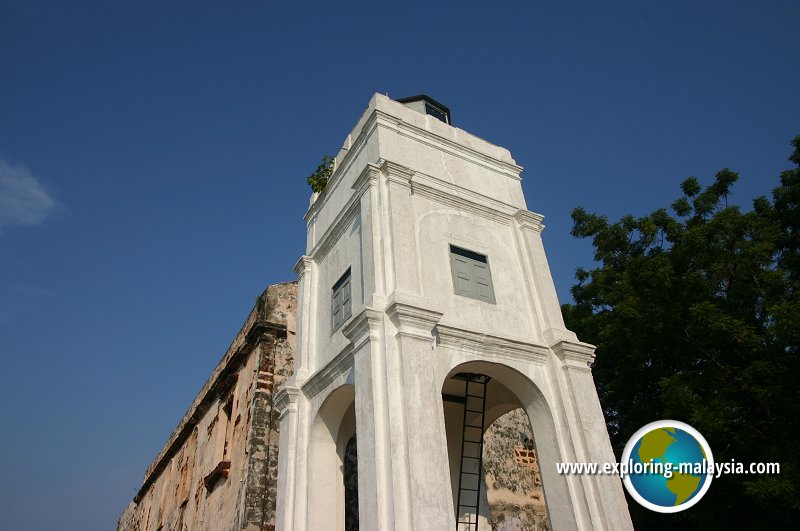 Church of St Paul, Malacca (9 July, 2005)
Church of St Paul, Malacca (9 July, 2005)
St Paul's Chuch (GPS: 2.19263, 102.24957) is the church ruins located on top of St. Paul's Hill. The hill itself was originally known as Malacca Hill. It was renamed Monti Ali Maria, or Mary's Hill after the Portuguese took over it. The St. Paul's Church, on top of the hill of the same name, was originally a chapel. It was known to the Portuguese in Malacca as the Chapel of the Mother of God (Madre de Deus) or Our Lady of the Hill (Nossa Senhora do Oiteiro).
According to 16th century Portuguese chronicler, João de Barros, it was not built by the Portuguese administrators, though, but by a Portuguese fidalgo (nobleman) called Duarte Coelho. When his ship miraculously escaped a tempest in the South China Sea. As an act of grattitude, he erected a chapel on top of the Malacca Hill, dedicating it to Our Lady of Grace (Nassa Senhora da Annunciada) in 1520-21.
In 1548, the chapel was passed on to the Society of Jesus by the archbishop of Goa, Don Albuquerque. Francis Xavier (later Saint Francis) received the title deeds on behalf of the Society. In 1556, the Portuguese enlarged the chapel, adding a second storey to it. Further renovation was carried out in 1590 with the addition of a tower.
The Portuguese also built a fort with four main gateways encircling the hill. The A Famosa is part of this fortress. Only two of the gateways were open at any one time. The church of Madre de Deus and a school were located on the top of the hill. The residence of the Portuguese officers were built on the slope and the rest of the Portuguese population were at the bottom of the hill. The houses were built of brick and wood. Within this fortress was a town hall, two hospitals, and five churches.
When the Dutch wrestled Malacca from the Portuguese in 1641, they destroyed all the Portuguese buildings except for the fortress, on which they placed the Dutch emblem. This can be seen today on the remaining gate of the fortress, the Porta de Santiago.
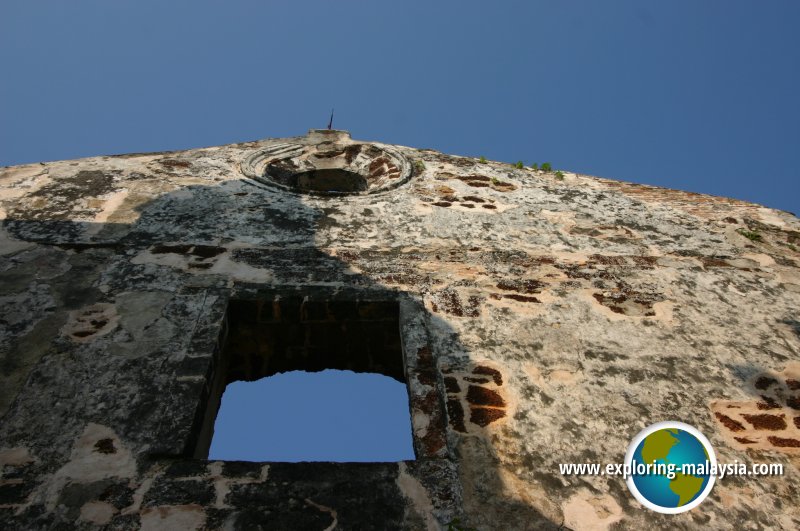 Wall of St Paul's Church (9 July, 2005)
Wall of St Paul's Church (9 July, 2005)
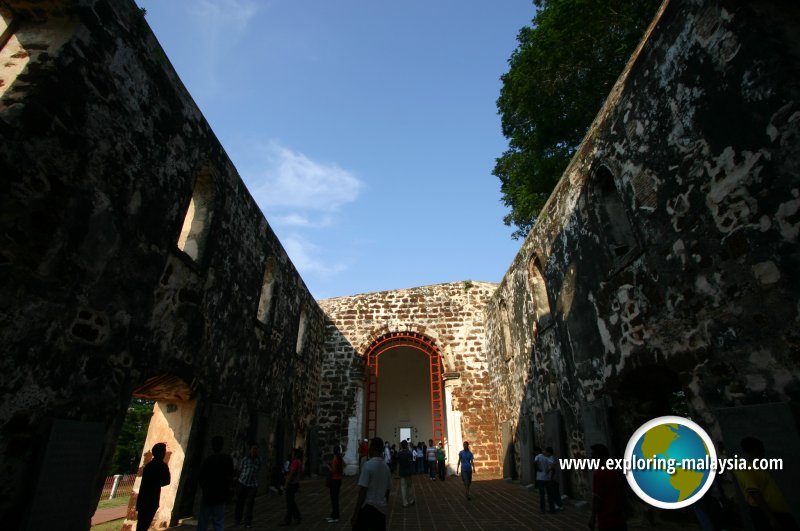 Interior of St Paul's Church (9 July, 2005)
Interior of St Paul's Church (9 July, 2005)
The Dutch also took over the Portuguese chapel on top of the hill, repaired and reconsecrated it into a Dutch Reformed Church, calling it the St. Paul's Church, a name which remains until today. The Dutch used it for their worship for the next 112 years, until they built their own church at the foot of the hill, Christ Church. St. Paul's Church was then abandoned.
When the British took over Malacca in 1824, the St. Paul's Church has lost its tower. However, the British added a lighthouse in front of it. And instead of being used it as a place of worship, the Church became a convenient storehouse for British gun powder.
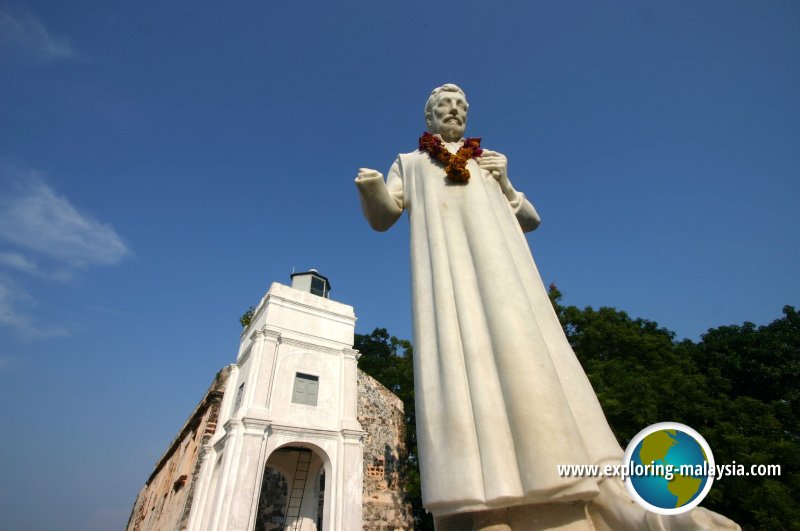 Statue of St Francis Xavier (9 July, 2005)
Statue of St Francis Xavier (9 July, 2005)
The Statue of St. Francis Xavier today stands in front of the ruins of St. Paul's Church. It was quite a recent addition, completed only in 1952, to commemorate the saint who passed there on several occasions from 1545 to 1552, on his way to the Far East. When he died in China in 1553, his body was sent back to Malacca, where it was interred here for nine months. When a decision was made to transfer it to Goa, the exhumers were astounded to learn that his body showed little sign of decay, even though it had been buried for nine months. This led to request for the missionary to be made a saint. Now, in order to be canonized, the Catholic church needed a relic. When the arm of Francis Xavier was severed, it still dripped blood.
If you take a look at Francis Xavier's statue, you will see that his right arm is also missing. However, this is not part of the original design of the statue. A day after the statue was consecrated, a large casuarina tree fell on it, breaking off its right arm. And so it stands today without one limb.
St Paul's Church is  on the Map of Churches in Malacca
on the Map of Churches in Malacca
St Paul's Church is  on the Map of Malacca
on the Map of Malacca
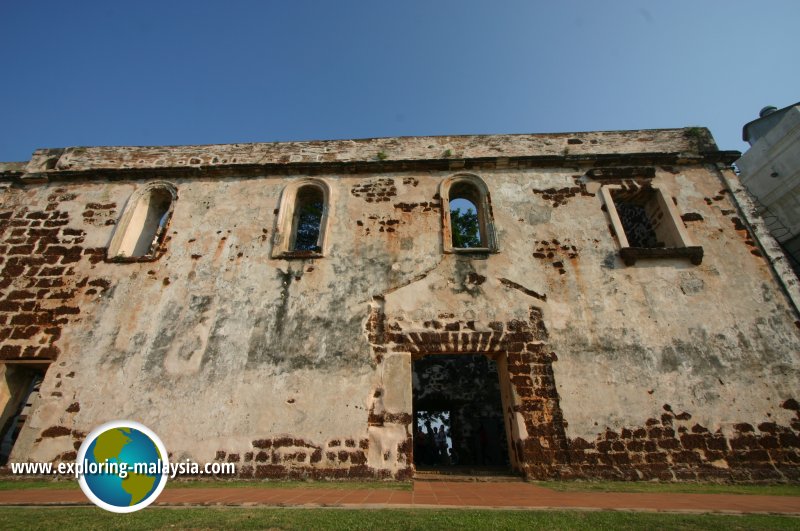 The length of the nave of St Paul's Church (9 July, 2005)
The length of the nave of St Paul's Church (9 July, 2005)
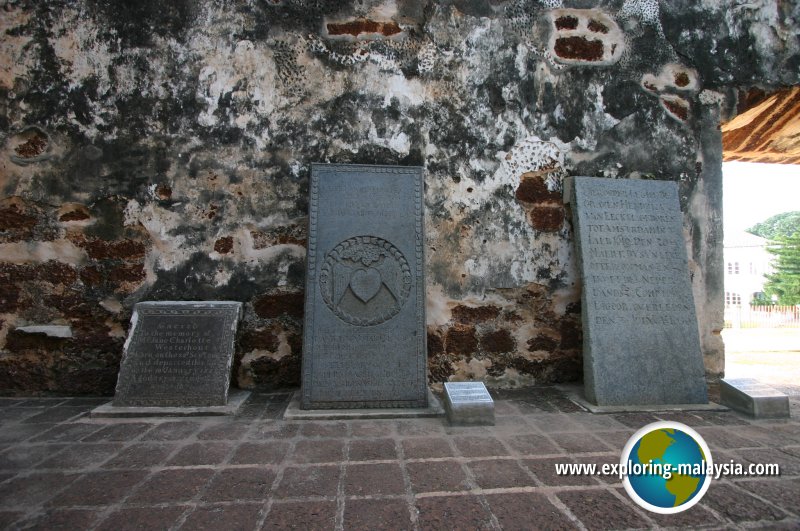 Tombstones leaned on the wall of St Paul's Church (9 July, 2005)
Tombstones leaned on the wall of St Paul's Church (9 July, 2005)
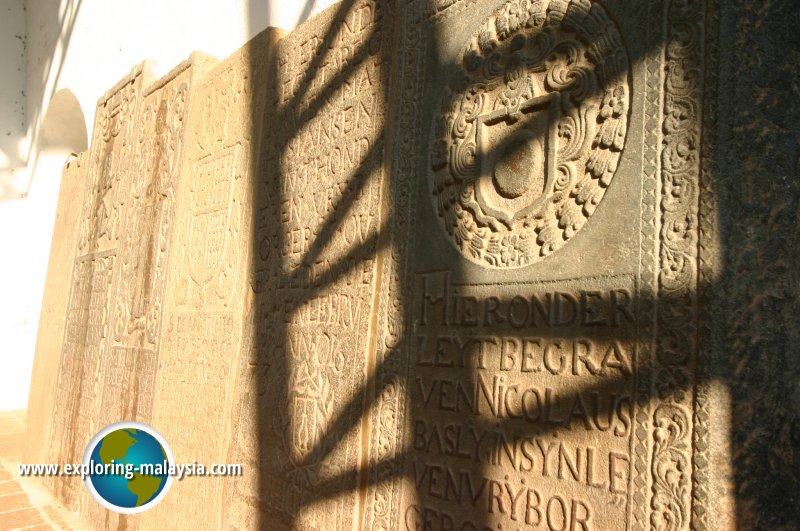 Tombstones leaned on the wall of St Paul's Church (9 July, 2005)
Tombstones leaned on the wall of St Paul's Church (9 July, 2005)
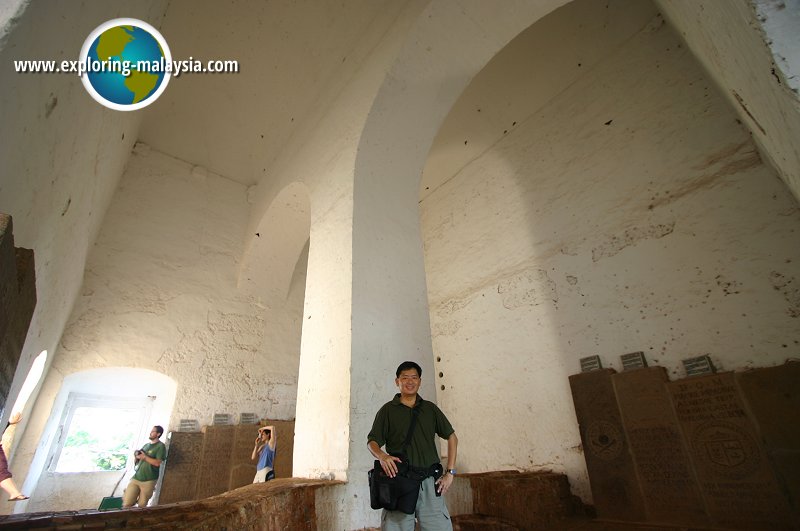 Timothy Tye inside a chamber of St Paul's Church (9 July, 2005)
Timothy Tye inside a chamber of St Paul's Church (9 July, 2005)
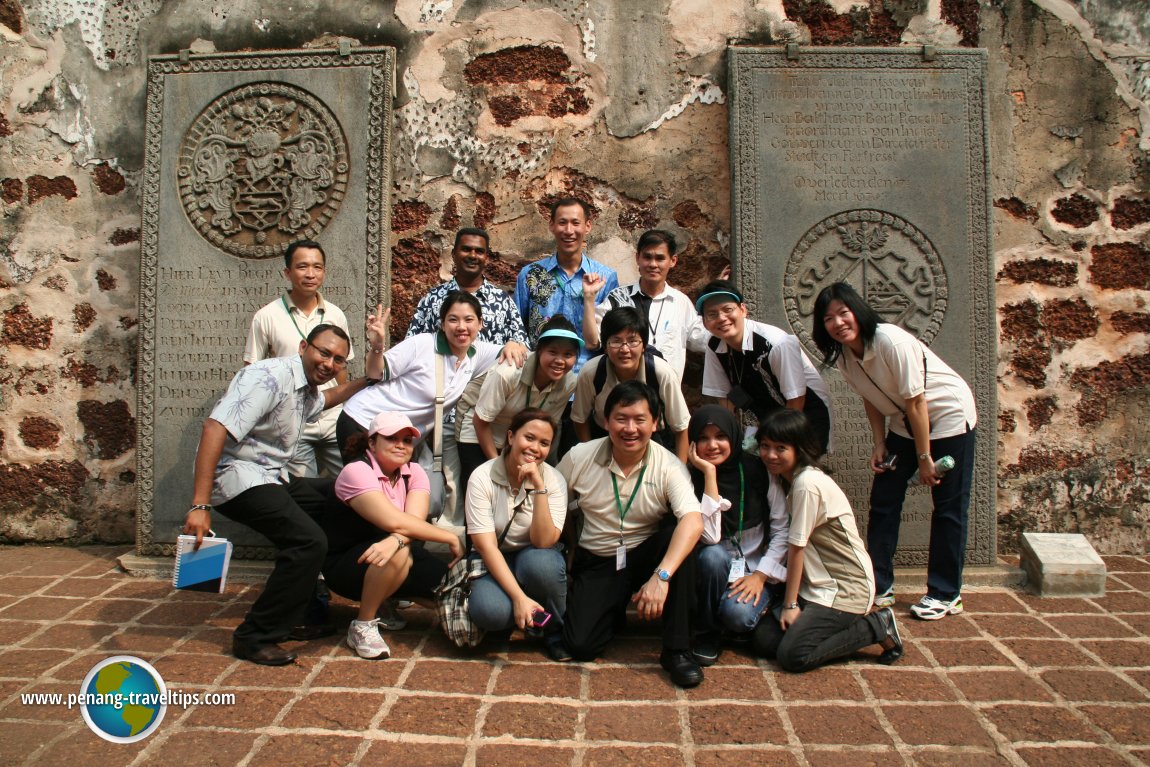 St Paul's Church, Malacca (19 July, 2009)
St Paul's Church, Malacca (19 July, 2009)
Discover Malacca; list of Churches in Malacca and Churches in Malaysia
 Map of Roads in Malacca
Map of Roads in Malacca
 Latest updates on Penang Travel Tips
Latest updates on Penang Travel Tips

Copyright © 2003-2025 Timothy Tye. All Rights Reserved.

 Go Back
Go Back